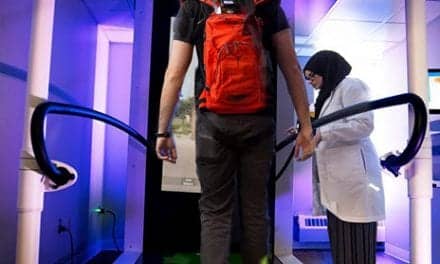By Frank Long, MS, Editorial Director, Rehab Management
Ah, the blissfully ignorant days when a handful of voices shouted that the novel coronavirus caused no more harm than a mild cold. Two months ago, many people believed that. Now, after 1.5 million COVID-19 cases have been reported and 91,664 deaths are attributed to the disease, the healthcare community knows better.
The destruction that COVID-19 levels at the brain and lungs has also been a hard new lesson for healthcare. Professionals working in post-acute care should understand this reality and be prepared for patients struggling to move through the aftermath of these damages. Keeping patients breathing is of chief concern for admitted patients, of course, but not the only one.
Neuroimaging confirms that stroke in particular should be anticipated among COVID-19 patients.
Acute stroke is most common
The pandemic has hit so fast and so hard that meaningful study has been difficult to come by. This week, however, a robust study of 3,218 COVID-19 confirmed patients throughout New York City extracted data from extensive neuroimaging that suggests how many COVID-19 survivors will emerge in rehabilitation with neurological impairments.
Acute stroke was the most common finding on neuro-imaging, seen in 92.5% of patients with positive neuro-imaging studies, and present in 1.1% of hospitalized COVID-19 patients.
Jain, Young, Dogra, Kennedy, Nguyen et al, 2020, Journal of Neurological Sciences
The study team also notes that acute stroke indicates a poor outcome for the hospitalized COVID-19 patient; observing that it exerted greater influence even than age, hypertension, or obesity. The researchers also concluded that COVID-19 patients whose neuroimaging shows a large ischemic or hemorrhagic stroke have a 50% mortality.
Brain is in harm’s way
Why is the brain vulnerable to COVID-19 transmission? The ease with which aerosol droplets can enter the nasal passages may have something to do with it. Two receptor proteins that live in the inner lining of the nose can open the door to COVID-19.
Dutch immunologist Martijn Nawjin, MC, studied this transmission process and observed:
“This is the first time these particular cells in the nose have been associated with COVID-19. While there are many factors that contribute to virus transmissibility, our findings are consistent with the rapid infection rates of the virus seen so far. The location of these cells on the surface of the inside of the nose make them highly accessible to the virus, and also may assist with transmission to other people.”
Martijn Nawijn, MC, University Medical Center Groningen, the Netherlands
The proteins, (ACE2 and TMPRSS2) also exist in the cornea of the eye.
Lungs go bad
If outcomes from SARS and MERS provide an indicator of the disability that may lie head for COVID-19 survivors, these individuals may have to grapple with lingering difficult with lung function. The reason, researchers say, is the fibrosis known to occur in SARS and MERS patients.
According to CNN Health:
And up to two-thirds of patients with SARS who were sick enough to require hospitalization also developed pulmonary fibrosis, according to DePinho. If the same pattern holds true for Covid-19, that could mean many thousands of people will have long-term lung scarring.
Gina Yu and Sanjay Gupta, MD, CNN Health
Even among patients who were presumed to have made complete recoveries from SARS and MERS, there is the potential for pulmonary fibrosis to progress and seriously damage the lungs, according to Ronald DePinho, professor and past president of MD Anderson Cancer Center and co-founder of Tvardi Therapeutics
Setting aside scarring and fibrosis in the lungs, COVID-19 has been observed to form blood clots at abnormally high rates, with the potential to create pulmonary embolisms in the lower extremities, according to CNN.




